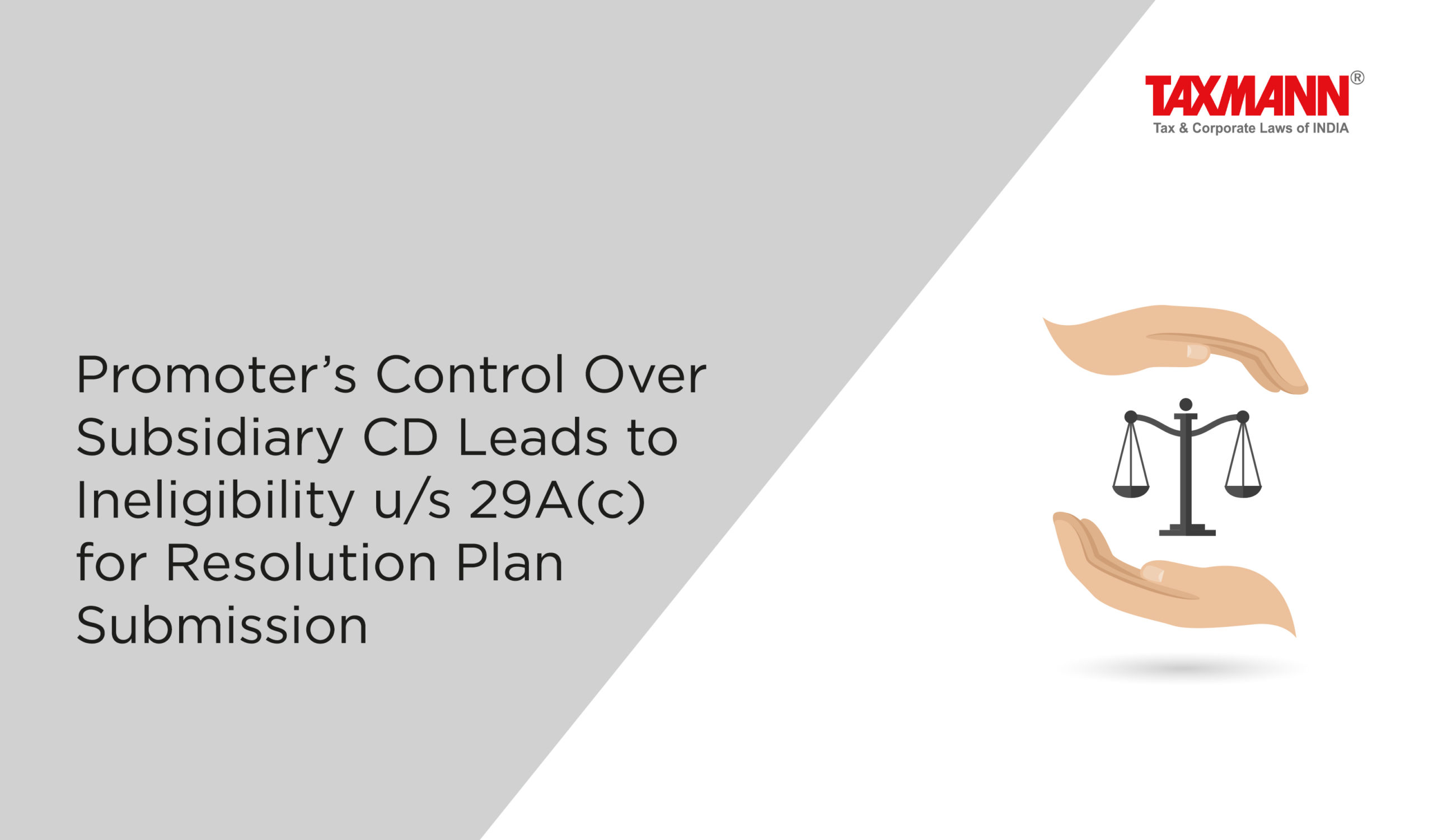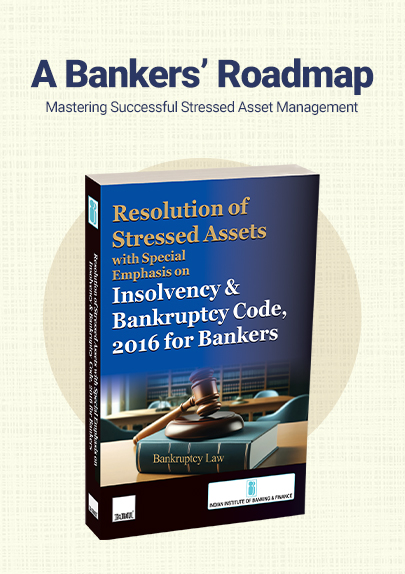Promoter’s Control Over Subsidiary CD Leads to Ineligibility u/s 29A(c) for Resolution Plan Submission
- Blog|News|Insolvency and Bankruptcy Code|
- 2 Min Read
- By Taxmann
- |
- Last Updated on 5 September, 2023
Case Details: Indian Bank v. Athena Demwe Power Ltd - [2023] 153 taxmann.com 381 (NCLT-New Delhi) (SB)
Judiciary and Counsel Details
-
- Bachu Venkat Balaram Das, Judicial Member & L.N. Gupta, Technical Member
- Saurav Agarwal, Ms Medha Sachdev, S. Jhanwar, Ms Devpriya, Sujoy C. Dutta, NPS Chawla, Brijesh Kumar Tamber, Gargi Tyagi, Advs., Vinay Singh & Yashu Rustagi for the Appearing Parties.
Facts of the Case
In the instant case, the CIRP application filed by the financial creditor against the corporate debtor was admitted. The Resolution Professional (RP) of the corporate debtor invited the submission of resolution plans and disqualified the applicant under section 29A of IBC on the ground that the applicant was a promoter of the corporate debtor and approved the resolution plan submitted by ‘S’.
As a result, the applicant (i.e. unsuccessful resolution applicant) challenged its disqualification and sought direction for RP or CoC to accept the resolution plan submitted by the applicant and declare the applicant as a successful resolution applicant (SRA).
Further, it was submitted that the applicant had been a promoter of the corporate debtor since 2013 because of its shareholding and was in management and control of the corporate debtor through its subsidiary company ‘R’.
It was noted that the applicant was exercising control through its directors of subsidiary and related entities in ‘R’ even on the date of submission of the resolution plan.
NCLT Held
The NCLT held that, on the lifting of the corporate veil, it had no doubt that the applicant was indeed exercising control over ‘R’ through directors of its related/connected companies and was in control of the corporate debtor.
Therefore, no error had been committed by the RP/CoC in holding the applicant as ineligible in terms of section 29A(c) of the IBC to submit a resolution plan.
List of Cases Reviewed
-
- Arcelormittal India (P.) Ltd. v. Satish Kumar Gupta [2018] 98 taxmann.com 99/150 SCL 354 (SC) (para 32) followed.
List of Cases Referred to
-
- Bipinchandra Parshottamdas Patel v State of Gujarat [2003] 4 SCC 642 (para 6.3)
- Thampanoor Ravi v. Charupara Ravi, [1999] 8 SCC 74 (para 6.3)
- Arcelormittal India (P.) Ltd. v. Satish Kumar Gupta [2018] 98 taxmann.com 99/150 SCL 354 (SC) (para 6.10.2).
Disclaimer: The content/information published on the website is only for general information of the user and shall not be construed as legal advice. While the Taxmann has exercised reasonable efforts to ensure the veracity of information/content published, Taxmann shall be under no liability in any manner whatsoever for incorrect information, if any.

Taxmann Publications has a dedicated in-house Research & Editorial Team. This team consists of a team of Chartered Accountants, Company Secretaries, and Lawyers. This team works under the guidance and supervision of editor-in-chief Mr Rakesh Bhargava.
The Research and Editorial Team is responsible for developing reliable and accurate content for the readers. The team follows the six-sigma approach to achieve the benchmark of zero error in its publications and research platforms. The team ensures that the following publication guidelines are thoroughly followed while developing the content:
- The statutory material is obtained only from the authorized and reliable sources
- All the latest developments in the judicial and legislative fields are covered
- Prepare the analytical write-ups on current, controversial, and important issues to help the readers to understand the concept and its implications
- Every content published by Taxmann is complete, accurate and lucid
- All evidence-based statements are supported with proper reference to Section, Circular No., Notification No. or citations
- The golden rules of grammar, style and consistency are thoroughly followed
- Font and size that’s easy to read and remain consistent across all imprint and digital publications are applied






 CA | CS | CMA
CA | CS | CMA


